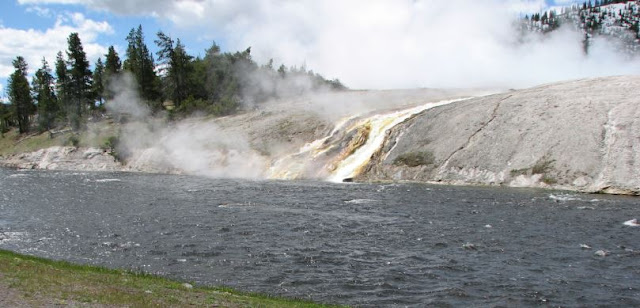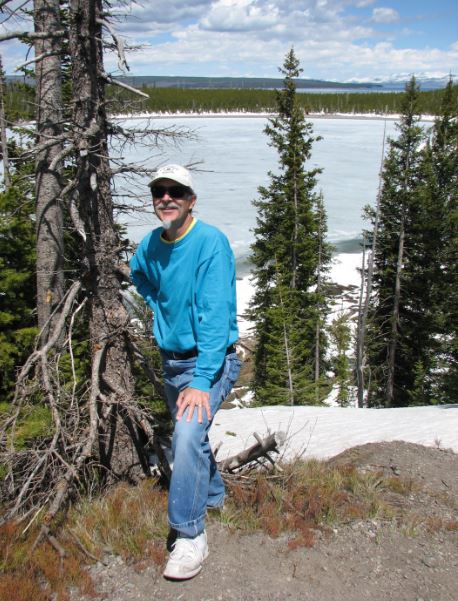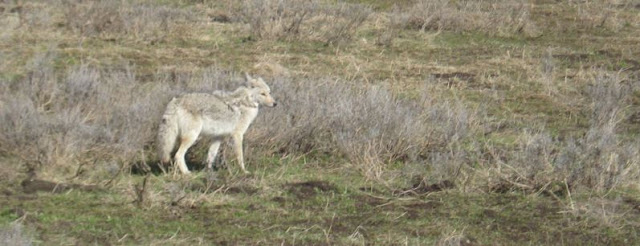A Month at Yellowstone...
Our first visit to Yellowstone and we did it from the less traveled east side. We stayed at Yellowstone Valley Inn and RV Park (YVI) which is in Wapiti, Wyoming. Wapiti is the Shoshone word for Elk. Wapiti, the town, is about 25 miles west of larger Cody, WY named after none other than Buffalo Bill Cody himself. The Wapiti area was some of Buffalo Bill's favorite big game hunting grounds. I will say there are lots of wild critters in these parts! It is high country up there, Wapiti being at 5,600 ft and Yellowstone being over 10,000 ft in places. This makes snowfall not uncommon in June and even July. We were welcomed with a 4" snowfall a day or two after we arrived in mid-May. And it did snow again in the higher elevations (Bear Tooth Pass) just before we left in mid-June.A small herd of Big Horn Sheep up top. Pretty sure there are 8 visible up there.
Pepé and Penelope at YVI, Wapiti.
Yellowstone Buffalo
We were lucky enough to see a Grizzly Bear... on the opposite side of the river!
Magnificent Upper Falls on the Yellowstone River in what is known as the Grand Canyon of Yellowstone. The geology is all volcanic and the colors of the earth are spectacular.
More Yellowstone Canyon... the beauty is <speechless>
A little closer in on Upper Falls
Steve loves the tress and has a happy moment.
At the precipice of Lower Falls
Panorama of Yellowstone Lake
Old Faithful ready to blow, always ready to blow!
There she blows!
Old Faithful Inn constructed in 1903-1904 is the largest Log Hotel in the world and quite possibly the largest log building of any type in the entire world!
Inside Old Faithful Inn
Ice on Yellowstone Lake in June.
Another icy view across Yellowstone Lake.
The mirror lake effect
Looks like Steve is up in the clouds.
Effluent from Grand Prismatic Spring flowing into Firehole River.
Closer up on the hot effluent.
Steve in front of the Grand Prismatic Spring. The colors are bacteria that thrive in the hot water, extremophiles and thermophiles. Each bacteria thrives in a different temperature so the colors change as you move farther away from the hot spring.
Grand Prismatic Spring, the largest hot spring in the U.S. and the third largest in the world.
Colors of Grand Prismatic
Spasm Geyser near Grand Prismatic Spring
Steve at a frozen bay of Yellowstone Lake
Tree Swallow taking a break
By the mud pots.. the sulfur smell can be very strong.
Icy Yellowstone Lake
Healthy Coyote hunting field mice.
Interesting textures of Grand Prismatic Spring.
and colors...
and the smell...
and the beauty!
Gari gets a shot by the mud pots; it was cold that day.
Mud Pots. HOT!!!
An effluent stream from Grand Prismatic Spring.
A smaller hot spring in the Grand Prismatic area.
Elk cow grazing lazily.
Bull Moose down in the bottoms.
Panoramic take away of Grand Prismatic Spring.


























































































